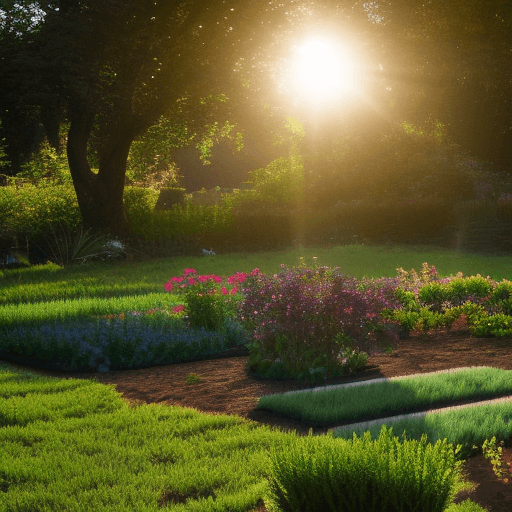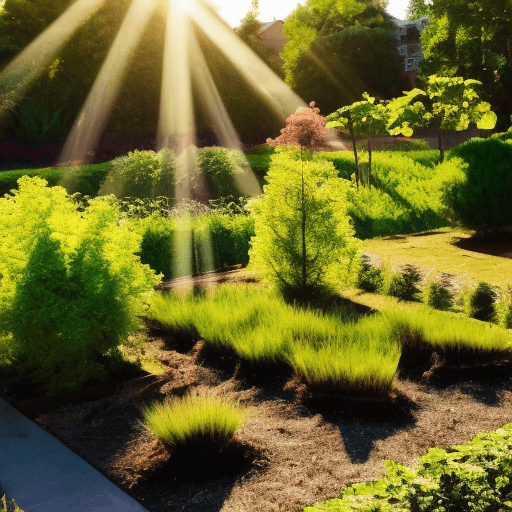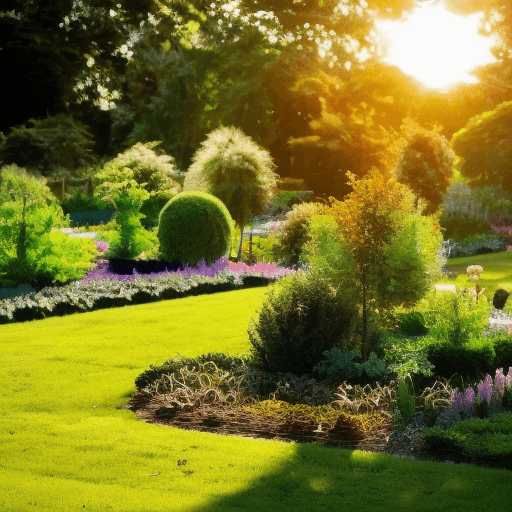What does full sun or partial shade mean? This is a question that many gardeners have, and the answer can be confusing.
The terms “full sun” and “partial shade” are often used interchangeably, but they actually mean different things. In this blog post, we will discuss the difference between full sun and partial shade, and how to choose the right plants for your garden!
Full sun usually means at least six hours of direct sunlight per day. Partial shade usually means three to six hours of direct sunlight per day.

What does full sun or partial shade mean?
When it comes to deciding what type of plants to plant in your garden, their sunlight requirements should be the foremost deciding factor.
Full sun and partial shade refer to how much sunlight a particular kind of plant need or can tolerate in order to thrive. Generally speaking, full-sun plants need at least 6-8 hours of direct sunlight on a daily basis while partial sun (or partial shade) requires 3-6 hours.
Different species of plants have varying levels of tolerance for amounts of direct and indirect light; some require full sun, some require more shade, and some desire an equal mix of both.
It is important to have an understanding of these terms when selecting plants so as to maximize their growth potential. For example, many vegetables and flowering annuals do best in full sun settings while many wildflowers, shrubs, and trees often prefer more shady locations with fewer hours of direct daily sunlight.
Knowing the amount of light each individual plant needs can help ensure that your garden is beautiful, thriving, and productive!
The difference between full sun and partial shade

Understanding the difference between full sun and partial shade is essential when it comes to gardening.
Full sun describes a plant’s ideal environment with direct sunlight for at least six hours each day, while partial shade means that the plant will receive three to six hours of sun daily.
Explain it to a child
Full sun and partial shade refer to how much sunlight a particular kind of plant needs or can tolerate. Generally, full-sun plants need at least 6-8 hours of direct sunlight while the partial sun (or partial shade) requires 3-6 hours.
What’s more, picking the wrong spot could put your plants at risk of becoming stressed or dying. To ensure success in your garden, try to determine which plants thrive in certain amounts of sunlight by looking for terms like ‘tolerates full sun’ or ‘tolerates partial shade.

Full sun plants such as succulents and herbs generally require longer periods of direct light, while lush greenery and blooms do better in areas with lower levels of sunlight.
Additionally, take into consideration any tall trees or buildings nearby that may block out natural light during certain times of the day.
Aim for around six hours minimum for optimal growth, but remember that some plants can become exposed to too much light if not correctly monitored.
How many hours is full sun to partial shade?

The exact number of hours for full sun and partial shade really depends on the season, climate, and geographical location; if you live in a colder region with limited sunlight days throughout the year, some areas might get less than 3 hours of sun regardless if it would otherwise qualify as full-sun or partial-shade by normal standards.
But overall, 6 hours or more qualifies as full-sun; 3–6 hours qualifies as partial-shade; anything less than 3 is considered full-shade.
To find out exactly how many hours a particular spot gets throughout a specific season, consider placing a simple hourglass contraption there and recording when it achieves 6+ hrs/day on average—then experiment by planting different kinds of flora at various locations around your garden.
With patience and persistence comes success! For either novice or expert gardeners alike, understanding which type of light exposure each kind of plant needs will go a long way in enabling healthy growth.
With the right information and planning in hand, your garden is sure to be one step closer to becoming beautiful!
What plants are best in full sun?
When planning a garden, it is important to consider ambient light. A full sun garden is one that receives six or more hours of direct sunlight per day.
For this kind of environment, you’ll want to choose plants that are exceptionally heat and drought-tolerant. Some popular options include lavender, rosemary, yarrow, coreopsis, daylilies, coneflowers, and sunflowers.
Other heat lovers include blanket flowers, bee balm, Lambs Ears, and Russian Sage. While annuals cannot be over-watered once established; perennials should not receive more than a couple of hours of direct sunlight for best results.
Additionally, it is important to incorporate some ornamentals such as shrubs and trees for privacy or aesthetics as well as hardscape options like stones or gravel patios to further provide interest in this sunny landscape.
Many cacti and succulents do particularly well in full sun conditions; some popular selections include sempervivum (hens & chicks), aloe vera, agave Americana (century plant), and echeveria elegans (Mexican snowball).
With thoughtfully chosen plants for each location in the garden, spectacular views can be achieved even under the sun’s glare! When expertly planned with consideration given to light exposure and water retention levels success in creating an environment hospitable to plants under almost any condition can be achieved!
Full sun plants provide beauty while being able to withstand intense conditions! Just imagine what your landscape can look like with a few thoughtful guidance when selecting your perfect plants! It could completely transform how you see your outdoor space!
What plants are best in partial shade?
When it comes to gardening in partial shade, the key is to select plants that can tolerate indirect light. Some examples of versatile shade plants are barrenwort, catmint, and heuchera.
Barrenwort is known for its beautiful heart-shaped leaves and speckled bright yellow blooms, making it an ideal choice for shady groundcover. Catmint’s dainty blue or purple flowers add a splash of color to any garden space and will attract wildlife like bees and butterflies.
Heuchera is an evergreen perennial that adds texture and interest with its colorful foliage which ranges from silver to deep red shades.
So whether you’re looking for cheerful colors or subtle textures, these shade-adapted plants are worth considering when filling partial shade areas of your garden.
Its ability to withstand periods without direct sunlight makes them both low maintenance and hardy.
By understanding the differences between full sun and partial shade environments you can be sure that your plans are getting all the care they need.
Article Sources
Jacks of Science sources the most authoritative, trustworthy, and highly recognized institutions for our article research. Learn more about our Editorial Teams process and diligence in verifying the accuracy of every article we publish.